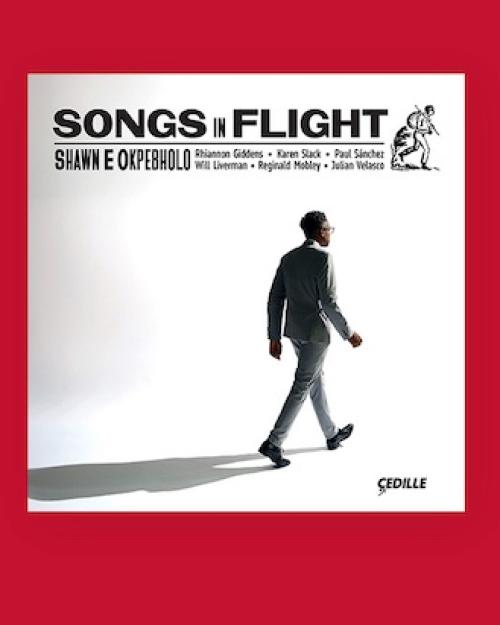Growing up as the child of Filipino immigrants in California, Christine Bacareza Balance, Performing and Media Arts, had no idea that the world of performing arts held a place for someone like her. “And then in my sophomore year in high school, the musical Miss Saigon premiered on Broadway,” she remembers. “The original production starred [Filipino actress and singer] Lea Salonga. For the first time, I saw someone who was both a Filipino and a performer. That had a big impact on me.”
Balance’s burgeoning interest in the arts received another boost in college when she discovered Filipino American writer Jessica Hagedorn’s novel Dogeaters, which explores the social, political, and cultural issues of Manila in the 1950s and 1980s. Around the same time, Balance joined a band, singing and playing the accordion, and volunteered at Bindlestiff Studio, a community-based Filipino American theater in the San Francisco Bay Area.
“A lot of what we did at Bindlestiff focused on identity,” she says. “And we also looked at the history of the relationship between the United States and the Philippines, and the culture shaped by it. We explored how that allowed for the migration of Filipinos like our parents, and how it had shaped a type of artistic sensibility for artists in the Philippines, as well as in the U.S.”
The Filipino American Music Scene
Balance’s firsthand knowledge of the Filipino American music scene informed her first book, Tropical Renditions: Making Musical Scenes in Filipino America (Duke University Press, 2016). The seed of the book was a chapter in her dissertation about Filipino American turntablists, DJs who create and manipulate sounds by using record players as musical instruments. “They were making weird experimental sounds and music in the late ’90s,” she says. “So, I started with them. There wasn’t much scholarly research about Filipino Americans and popular music. What did exist was often written by folks who were not in the field of performance or popular music studies, so they focused on the textual material, not the actual sound of the music or the aspects of a live performance versus recording.”
Balance questioned, in particular, the long-standing popular trope that Filipinos were simply mimicking American culture. Travel writer Pico Iyer, for instance, wrote in the late 1980s that Filipinos were basically obsessed with American music and film, she says. “In his description of the Philippines, karaoke or American ballads are the only type of music he hears,” she says. “I realized this is a trope that is often taken up by Filipino and Filipino American writers, too.”
“I knew Filipino popular music culture wasn’t just karaoke and cover songs, although that’s an important part of it.”
When she worked at Bindlestiff, Balance took part in a Filipino American music festival called Pinoise Pop that featured bands from all over the United States. “They had to have at least one member who was Filipino,” she says. “I saw so many different kinds of musical acts—classic rock bands based in Houston, punk rock bands from Los Angeles, folk rock singer/songwriters as well as local R&B acts. I knew Filipino popular music culture wasn’t just karaoke and cover songs, although that’s an important part of it.”
Faithful Listeners or Innovative Musicians?
As Balance pored through archives of the American colonial presence in the Philippines in the early twentieth century, she was struck by the number of images she encountered of Filipinos listening passively to phonographs. “It was this repetitive image,” she says. “I thought, maybe this is where rendering Filipinos as these faithful listeners began.”
Balance turns that trope on its head in Tropical Renditions. In one chapter, for instance, she focuses on the rise of the child star Jake Zyrus. “Zyrus got his start on The Ellen Show when Ellen DeGeneres was bringing in various YouTube sensations,” Balance explains. “For Zyrus, karaoke was not a passive form but a type of informal training. Through karaoke, he was able to learn and rehearse U.S. music, which led to him competing in child star competitions in the Philippines and other parts of Asia. This allowed him to give the money he won to his mother, who was raising the family alone, as well as to become a viral sensation on YouTube from his performance on the South Korean TV show Star King.”
In another chapter, Balance explores the genesis of the Pinoise Pop music festival, which was founded by two immigrant Filipino brothers, Jesse and Ogie Gonzales. “Prior to their immigration they were part of the punk scene in the Philippines,” Balance says. “So here they are, starting this Filipino American music scene in San Francisco, but it’s very much inspired by their experience of the music scene in the Philippines. It blew my mind that folks like Pico Iyer saw the Philippines as only having karaoke while these Filipino musicians were playing punk music with lyrics in Filipino languages.”
Sensational Politics, Marcos Style
For her next book, Balance has decided to focus on the early 1970s through the mid-1980s in the Philippines—the years when the dictator Ferdinand Marcos ruled the country by martial law. Tentatively titled Making Sense of Martial Law, the project explores what she calls the sensational politics of the Marcos regime. “I’m exploring the ways in which dictatorships utilize the arts and spectacle, how that both obfuscates and plays up certain political agendas,” she says. “At the same time, I’m looking at how artists in both the Philippines and the U.S. turn our attention to different aspects of the Marcos era.”
Balance had always found it hard to understand why so many Filipinos supported Marcos, she says. And then she attended an immersive theater production of Here Lies Love, a musical about Ferdinand Marcos’s wife, Imelda. “The audience members stood around as if in a nightclub while the actors portraying the Marcoses walked through the crowd, as the real-life couple did on the 1965 presidential campaign trail,” she recalls.
“Experiencing that with these actors brought home to me that many political leaders and dictators have a certain kind of charm,” she continues. “Even I was compelled to shake their hands, although I knew all this history and the events that would follow Marcos’ election into office, and that made me less critical of the everyday people who supported the Marcoses in those early years. I experienced firsthand how one could be disarmed and perhaps overwhelmed by emotion and perceived connection. In 1965, the Marcoses still symbolized a new face for the Philippines and the potential for political change.”
A Willful Forgetting of History
At the same time, Balance couldn’t help but wonder if her fellow audience members understood the connections between the United States and the events that were unfolding in the musical. “There was a moment, right after [opposition leader] Benigno Aquino gets assassinated in the play, where I looked at the other folks who were there—some of them Filipino, but also some white Americans and African Americans,” she says. “I thought, I don’t know if these people realize this is as much American history as it is the history of the Philippines.
“There is a close relationship between the two countries that begins with American war and colonialism in the Philippines since the turn of the twentieth century,” she continues. “But also, the U.S. military bases in the Philippines were the oldest ones in the Asia-Pacific, and during the Vietnam War in the 1970s, in particular, the U.S. government needed them. So, they backed the Marcos dictatorship and looked away from what the regime was doing.”
Balance is motivated to work on her current project now, she explains, because this coming fall will be the 50th anniversary of Marcos’s declaration of martial law. “For many in the Philippines and in the U.S., there has been a willful forgetting of this history of the Marcos regime,” she says. “There was also a presidential election in the Philippines this May 2022, and Bongbong Marcos, Ferdinand and Imelda’s son, ran for president and won. A revisionist history, a forgetting of prior history, is being weaponized on social media right now. That’s why I feel this work is especially timely.”




